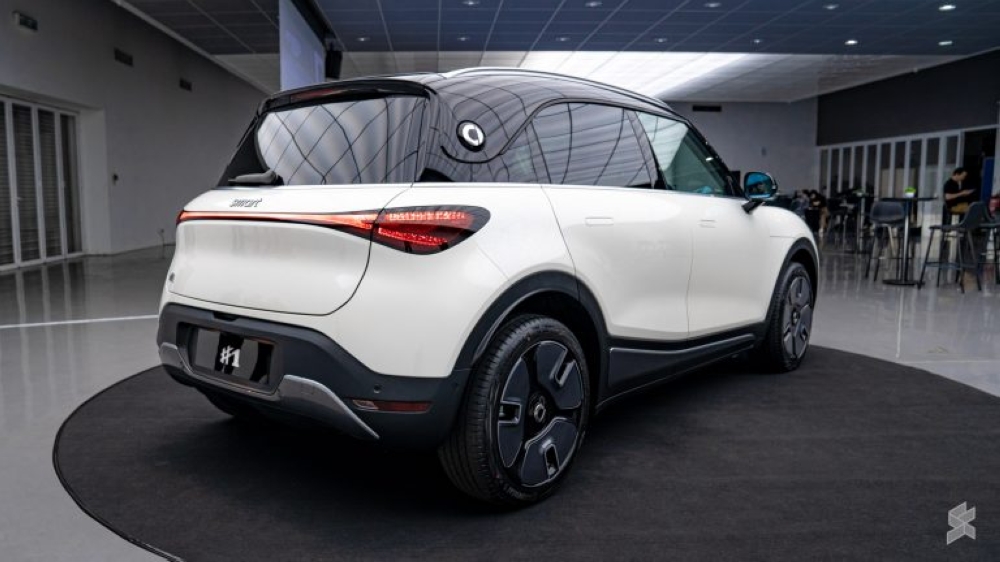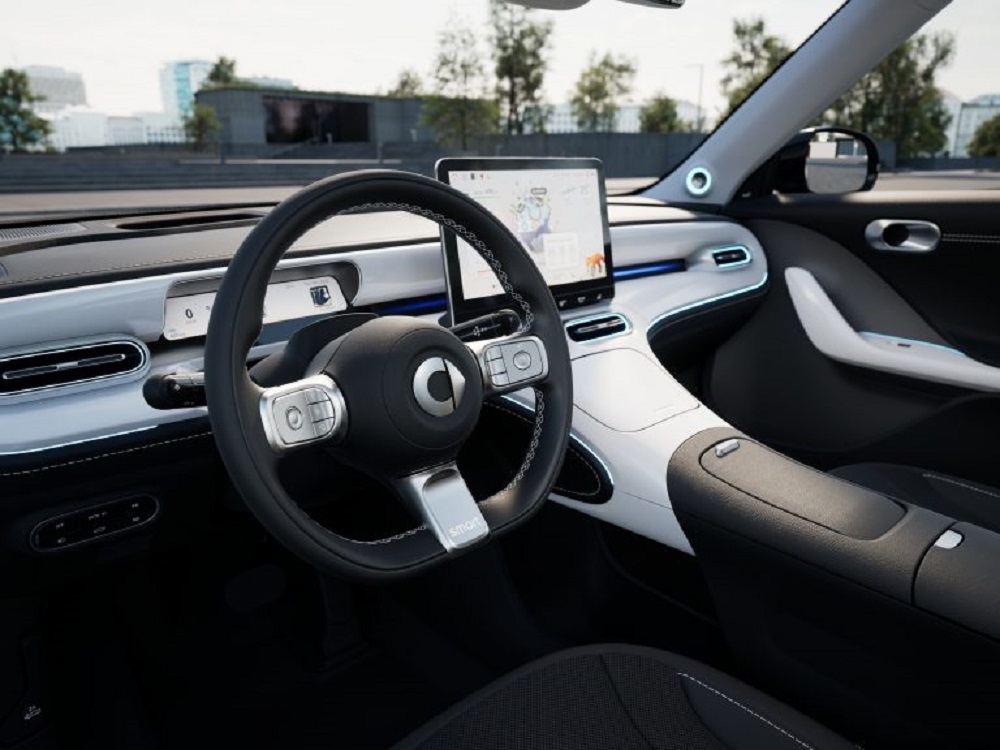KUALA LUMPUR, July 22 — We’ve been hearing about Smart impending return to Malaysia for a year and a half now, but we’re finally getting our first taste of what that will look like.
Proton New Energy Technology (Pro-Net), a subsidiary of Proton, has revealed the exterior of the Smart #1 Premium that will go on sale sometime in the fourth quarter of the year.
The car is Smart’s first new model since Mercedes-Benz sold 50 per cent of the brand to Geely in 2019, and as such it has elements from both companies.
The #1 is a compact electric SUV around the size of the Ora Good Cat and Mini Countryman, meaning that it’s smaller than rivals like the BYD Atto 3, Mercedes-Benz EQA, Volvo XC40 EV and BMW iX1. It measures 4,270mm long, 1,822mm wide and 1,636mm tall, with a wheelbase of 2,750mm.
As Geely handled the engineering of the car, the #1 is built on the company’s Sustainable Experience Architecture (SEA), the same one that underpins the new Volvo EX30.

The design, however, is all Mercedes, so the #1 has hints of that brand’s organic Sensual Purity design language, but with more youthful styling cues.
These include the full-width matrix LED headlights and LED taillights, which have an X-shaped look and play a welcome sequence when the car is unlocked; they will even perform a Tesla-style light show that can be activated through the infotainment system.
Other details include the clamshell bonnet, flush door handles, frameless windows and a floating roof design.
The latter is finished off by the Smart logos at the rear corners; these are illuminated, as is the front grille. The Premium model rides on 19-inch alloy wheels in an aerodynamic flat-faced design.
We can’t show you the interior of the #1 just yet, but we can tell you that the Mercedes-designed interior is as we’ve seen in images released globally. It features a distinctive Y-shaped dashboard and high centre console, topped by a 12.8-inch centre touchscreen.
The infotainment system was developed by Geely subsidiary ECARX, the same company that helped developed the Atlas system for Proton; unlike the latter, Smart’s version features wireless Apple CarPlay and Android Auto as standard.
You’ll also find a slim 9.2-inch instrument display, a Qi wireless charger, a cooled armrest console, a 13-speaker Beats sound system and a hands-free powered tailgate.
The Premium model’s party piece, however, is a giant panoramic glass roof that, in stark contrast to the Volvo C40 and Jaguar I-Pace, comes with a powered sunshade.

Elsewhere, the seats are power adjustable at the front and come with an easy entry/exit function for the driver, while the 60:40-split rear bench can be reclined and slid forwards and backwards.
The latter helps with the small 323-litre boot, which can be expanded to 411 litres by sliding the rear seats fully forward.
Alternatively, you can fold them completely flat to boost luggage capacity to 986 litres. The front boot measures 15 litres.
In terms of safety, the #1 is available with several driver assists, including autonomous emergency braking, adaptive cruise control and lane centring assist for Level 2 semi-autonomous driving, and it can do automated lane changes as well.
There’s also evasive steering assist and park assist on the list. At the moment, it’s unclear if these features will be offered in Malaysia.
No specifications were revealed for our market, but in Europe, the #1 Premium is powered by a single motor at the rear that produces 200kW (268hp) and 343Nm of torque.
That’s enough to get it from zero to 100km/h in 6.7 seconds on its way to a top speed of 180km/h. A 66kWh ternary lithium battery provides a range of 440km on the WLTP cycle.
As for charging, the #1 can accept up to 150kW of DC fast charging, filling up the battery from 10 to 80 per cent in under 30 minutes.
The car is also one of the few in the market to support up to 22kW of AC charging, which completes the same benchmark in less than three hours.
Aside from the regular #1, Pro-Net also has plans to introduce the sportier Brabus version. This all-wheel-drive model produces 315kW (422hp) and 584Nm of torque, enabling it to complete the century sprint in just 3.9 seconds.
With this much performance, the range drops slightly to 400km. — SoyaCincau






















